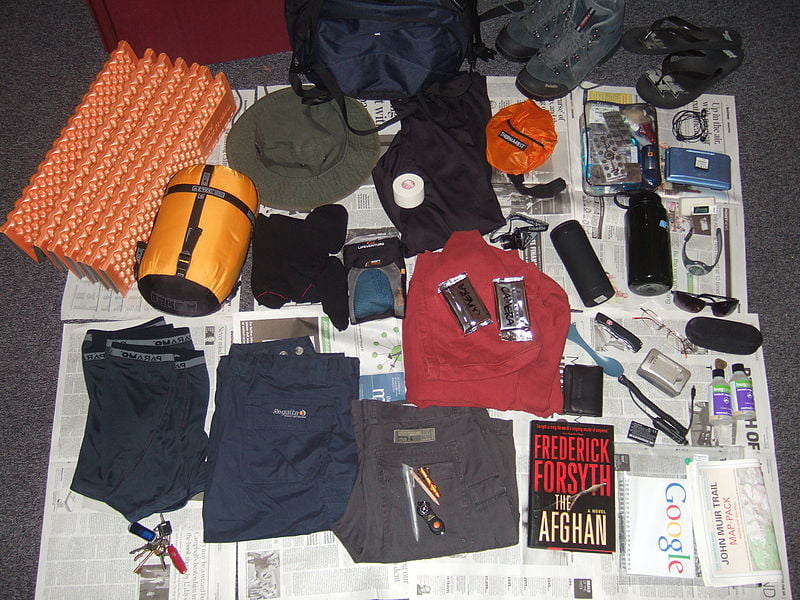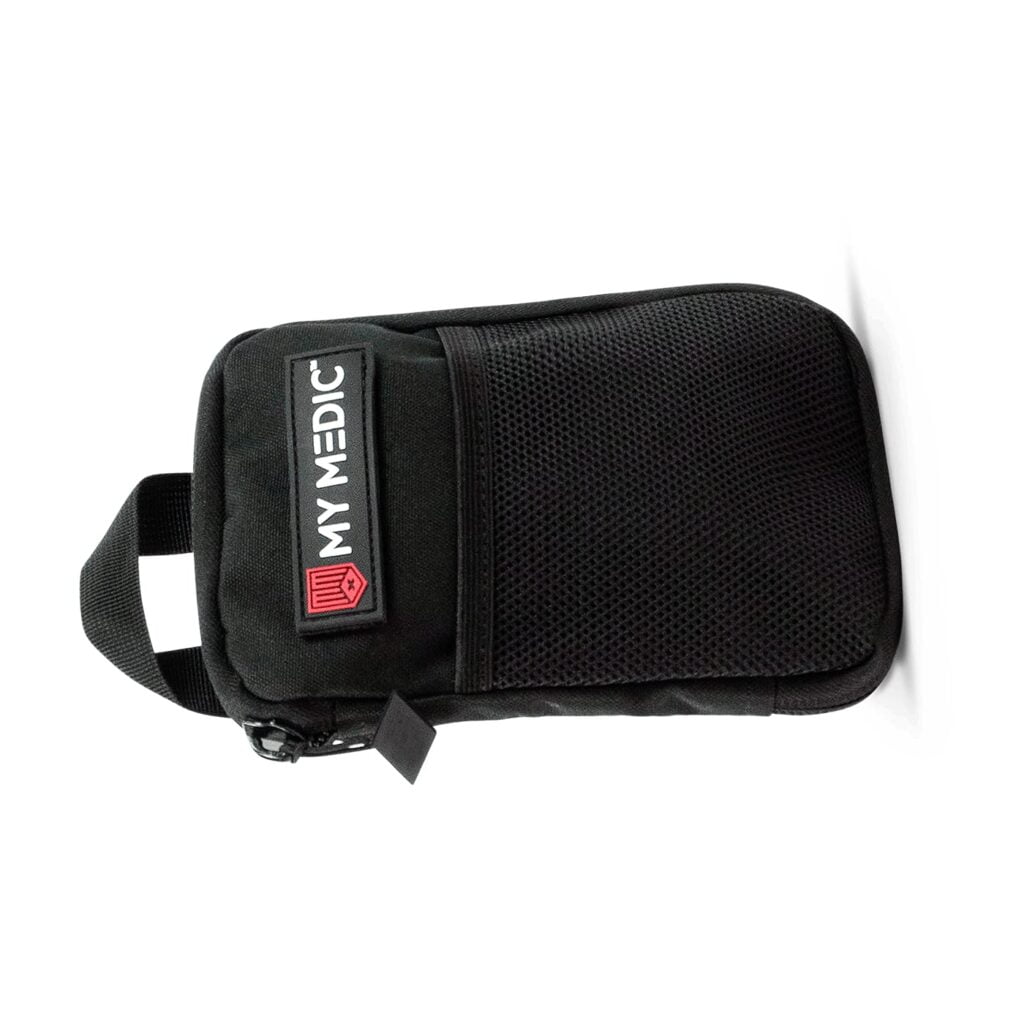Introduction:
Solo Backpacking, let’s get started! Envision embarking on an exciting journey by yourself. As thrilling as it may sound, it can also be a little frightening. We are discussing solo backpacking- traveling through the wilderness by yourself. We’re going to reveal five extremely effective strategies in this post that will make your solo backpacking trip completely unafraid. So continue reading to discover these strategies if you’re interested!
Choosing The Right Destination For Solo Backpacking
So choosing the ideal location for solo backpacking is the first step in going alone backpacking. This is crucial since you want your vacation to be both entertaining and safe. You should have the following information.
1. Terrain And Weather:
Finding the ideal location to explore is similar to finding the ideal ingredients for a dish. You should consider the kind of terrain you’ll be walking on as well as the probable weather. Do you adore the thought of hiking mountains, exploring verdant forests, or unwinding on a warm beach? Different adventures can be found in different locales. Moreover, keep an eye on the weather. There are places where the summers can be unbearably hot and the winters extremely chilly. Knowing what to expect can help you prepare the appropriate equipment and attire.
2. Skill Level:
In the same way that you wouldn’t begin with the most difficult level in a video game, novice solo backpackers shouldn’t venture into difficult areas. It’s critical to be truthful with oneself regarding your skills. If you’ve never gone solo backpacking before, start in less difficult locations. You can progressively take on increasingly difficult terrain as you get more experience. This will guarantee your enjoyment and keep you safe.
3. Research:
See where you’re going as the detective in a mystery novel. Consult guidebooks, the internet, or other seasoned travelers for information. Look up images and reviews of the location you are considering. You’ll be able to make an informed decision and receive hints about what to expect thanks to this research. You’ll be more ready the more you understand about where you’re going.

4. Permits And Regulations:
There are rules in every place. Certain locations may require permits in order to enter, and there may be rules that you must abide by. To stay out of problems legally and to protect the environment, it is imperative that you comprehend and follow these guidelines. Thus, find out if there are any licenses or laws that need to be followed when visiting your chosen location for solo backpacking. Obtain the requisite permits, if any.
5. Accessibility:
Reaching your goal is a crucial aspect of the journey. Think about how simple or difficult it is to attain. Is it a short commute from your house, or will you have to go far to get there? Consider your choices for getting around, such as whether you can rely on public transit or if you’ll require a car. This will assist you in making an effective travel plan and preventing any last-minute shocks.
When choosing your destination to go alone, keep these things in mind to ensure a successful and pleasurable solo backpacking experience. Selecting the ideal piece to finish your adventure jigsaw is similar to that.
Essential Gear And Packing
Now, let’s discuss what you’ll need and how to pack for your solo backpacking trip. Consider this like you would prepare for a camping vacation. This is important for you to know:
Choosing A Backpack:
Think of your backpack as a reliable companion. On this solo backpacking, it’s your closest companion. You should choose a backpack that is both roomy enough for your belongings and fits you properly. Verify that it is sturdy and appropriate for the type of activity you plan to do.
Shelter:
Tent And Sleeping Bag:
These serve as akin to a comfortable abode in the outdoors. To keep warm at night and to shield you from the weather, you’ll need a high-quality sleeping bag. Select these according to the type of weather you expect on your way of solo backpacking.
Clothes:
Consider your garments to be your weatherproof armor. Make sure your outfit fits the weather you will be experiencing. Your friend are the layers. Remember to pack necessities like an extra pair of socks, a rain jacket, and a sun hat.
Footwear:
Your adventure’s wheels are your shoes. Make sure your hiking boots or shoes are supportive and comfy. To avoid blisters, they shouldn’t be broken in before your vacation.
Food And Cooking Supplies:
You have to eat, don’t you? Bring easily prepped, light, and healthful cuisine. Remember to bring cookware, utensils, and a small stove if necessary.

Water And Filtration:
It’s really important to stay hydrated. To ensure that the water you consume is safe to drink from natural sources, bring a reusable water bottle, a water filter, or purification tablets.
Navigational Aids:
These function similarly to a treasure map. Always have a map, compass, and possibly a GPS with you. They’ll assist you in staying on course and finding your way.
Lighting:
You’ll need light as the sun sets. Your best ally is a flashlight or headlamp. Keep extra batteries in mind!
First Aid Kit:
Mishaps do occur. Your personal medic is similar to your first aid kit. Carry essentials such as bandages, analgesics, and antiseptic wipes.
Personal Items:
Remember to bring identification, valid permits, and basic personal items like bug repellent, sunscreen, and hygiene.
Trash Bags:
Don’t trample anything. Bring along a few tiny garbage bags to gather your rubbish and maintain a clean environment.

Packing A Backpack:
To maintain order among your belongings in your backpack, use packing cubes or stuff sacks. It greatly facilitates finding items.
Recall that the secret to packing is to bring the necessities and to pack light. Carrying too much weight can make your journey considerably more difficult. You may prepare for your solo backpacking trip by selecting the appropriate equipment and packing it carefully. Consider it like preparing all of your camping supplies for a large-scale outdoor stay!
Navigation And Route Planning
Now, let’s discuss ways to ensure that your solo backpacking trip goes smoothly and that you can find your way back. Consider it as mapping out your itinerary. This is what you must do:
Compass And Maps:
Maps can be compared to the jigsaw parts of an expedition. Obtain thorough maps of the region you intend to explore. Similar to your North Star, a compass directs you. Discover how to combine them to determine your direction. Being able to use a compass and read a map can be quite helpful.
GPS & Technology:
A GPS device or smartphone with GPS apps might be quite helpful if you’re tech-savvy. They can assist you in following a prearranged itinerary and locate you. Just don’t forget to pack a portable charger or additional batteries.
Route Planning
It similar to drawing out your itinerary on a large adventure map. Choose your daily destination, the length of your hike, and the campsite. Make a plan for the amount of water you will require and its location. It’s similar to planning a route for an outdoor excursion.
Signs and markers can be found on a lot of hiking trails. These point you in the correct path, just like breadcrumbs do. Observe these landmarks to ensure that you don’t inadvertently go off course.
Emergency Exit Plan
Even the most seasoned adventurers prepare for the unexpected with an emergency exit plan for your solo backpacking. Make a strategy for emergencies in case you become lost or hurt. Understand how to get to the closest aid and where it is located.
Explain Your Plan:
Inform a trusted person of your travel arrangements for solo backpacking. Tell them your route, when you plan to check-in, and your approximate time of return. In this manner, in the event of an issue, someone will be aware of it and able to assist you.
Keep To The Trail:
This is analogous to following the path through a maze. Staying on designated routes is a safer option than straying. In this approach, you’re more likely to stay on course.
Recall that route planning and accurate navigation are similar to having a road map for your journey of solo backpacking. It facilitates knowing your destination, the best route to take to get there, and what to do in the event that plans don’t work out. Consider it akin to setting out on a treasure hunt, where locating the treasure requires a map!
Safety And Emergency Preparedness
Let’s now discuss safety precautions and emergency preparedness for your solo backpacking trip. It functions similarly to a safety net in case things don’t go according to plan. This is what you certainly ought to do:
First Aid Kit:
Consider this to be the first aid kit of a superhero. For the treatment of minor wounds including cuts, scrapes, and blisters, it is indispensable. Ensure that it has bandages, sanitizers, analgesics, and any prescription drugs you may require.

Understand Basic First Aid:
Having the equipment is not enough; you also need to know how to utilize it. Acquire fundamental first-aid knowledge, such as how to treat a sprain or bug bite, or how to clean and bandage a wound.
Communication:
Maintaining contact is essential. Bring a personal locating beacon, a satellite communicator, or a cell phone that is fully charged. They can serve as your conduit to the outside world if you live in a distant place.
Emergency Numbers:
It’s similar to having a roster of superheroes you may contact in times of need. Give a reliable friend or relative a copy of your itinerary of solo backpacking and let them know who to get in touch with if you are unable to return on schedule.
Emergency Plan:
Consider your emergency plan to be your escape route. Make sure you know exactly what to do in case you get hurt or lost during your solo backpacking. Remain composed, locate a secure area, and utilize your communication gadget to request assistance. Make sure someone is aware of your strategy so they can notify rescuers in case of an emergency.
Keep Yourself Hydrated And Nourished:
Your body requires food and water, just like an automobile does. Stay nourished and hydrated to maintain your strength and awareness. Remember to disinfect your drinking water to prevent disease.
Wildlife Awareness:
Show consideration for the local fauna. Find out about local wildlife and appropriate behavior when interacting with them on of your solo backpacking. It’s best to keep your food stowed away from prying eyes.
Weather Updates:
Pay attention to variations in the weather during solo backpacking. Extreme weather conditions or sudden storms can be hazardous. Pay attention to weather forecasts and be ready to modify your plans if necessary.
Environmental Responsibility:
Remove any traces. This entails being environmentally conscious and picking up after yourself. To preserve the environment, abide by the “Leave No Trace” philosophy.
Navigation Skills:
It is essential to understand how to utilize a map for your solo backpacking, compass, and GPS gadget, as we have already discussed. If you get lost, these abilities can help you find your way back.
Being ready for anything unexpected is similar to carrying a safety net on an expedition. Although you hope not to use it, it’s there in case. Thus, prepare for emergencies, keep your communication gadgets charged, and pack a first aid kit. It’s similar to having a dependable sidekick and being a superhero, prepared to take on any obstacles in your path.
Both Mental And Physical Readiness
I’ll concentrate on preparing your body and mind for your solo backpacking trip in this section. Consider it similar to an athlete warming up for a major match. This is what you must do:
Mental Readiness:
Remain Upbeat:
Your attitude directs your path, much like a compass. Remain upbeat, self-assured, and convinced of your abilities. Backpacking alone might be difficult, but you can overcome challenges if you have the appropriate mindset.
Anticipate Solitude:
Envision spending time by yourself thinking. When you go trekking alone, you won’t be able to chat to anyone for a time. Accept the silence and make the most of your time alone to think, meditate, and spend time in nature.
Acquire Essential Wilderness Skills:
It’s similar to picking up a new game’s rules.Take some time to become familiar with basic outdoor skills like building a campfire, filtering water, and identifying edible plants. With these abilities, your excursion will be safer and you will feel more confident.
Gain Fundamental Wilderness Skills:
Mindfulness and meditation are similar to mental workouts. You may stay composed, manage your tension, and take full advantage of your outdoor experience by engaging in mindfulness and meditation practices.
Physical Preparation:
Get Fit:
Approach this as you would a marathon training regimen. Having good physical health makes the solo backpacking more pleasurable. Aim to increase your strength and cardiovascular fitness. A fully stocked backpack is a terrific way to be ready for a hike.
Practice Hiking:
Hiking is akin to rehearsing your steps for a dance routine. Take small treks before your major expedition of solo backpacking to get your feet wet with long-distance walking while carrying your kit. You can also use it as an opportunity to test your gear.
Break In Your Equipment
Like new shoes, new gear can take some time to break in and become comfortable. To prevent blisters and pain on the trek, wear your hiking boots and other equipment before the solo backpacking.
Nutrition And Hydration:
Your body requires both water and nourishment. Drink lots of water both before and throughout the solo backpacking to stay hydrated. Consume well-balanced meals to maintain your energy levels.
Rest And Recovery:
Consider taking a break as a way to recharge your batteries. Ample rest and sleep should be obtained in between training sessions. It takes time for your body to heal and get ready for the experience.
Know Your Boundaries:
As with any sport, be aware of your limits. Make an effort, but don’t go overboard. It’s acceptable to take a break or postpone your excursion for the day if you’re feeling worn out or ill.
You can prepare yourself for any task by intellectually preparing yourself with the appropriate mindset and abilities, physically preparing your body with exercise and a healthy diet, and becoming mentally and physically fit like an experienced explorer. Imagine it as akin to an explorer getting ready for a great adventure—getting in shape and adopting the proper mindset.
Conclusion:
After reading through this tutorial on solo backpacking secrets, you’ve reached the end of your journey. It’s time to conclude and give you a few parting thoughts:
Accept The Journey: Backpacking alone is a fantastic experience. It can indeed be difficult at times and even a little frightening, but it’s also an opportunity to learn about yourself, connect with nature, and make lifelong memories.
The Secret Is To Prepare: We’ve covered topics such as selecting the ideal location, preparing yourself both physically and emotionally, organizing your route, packing the appropriate items, and keeping safe. Each of these actions fits together like a puzzle piece to ensure the success of your quest.
Always put your own safety first. Keep this in mind. Spend some time getting ready, making emergency plans, and making sure someone is aware of your plans. Like having a safety net in case something goes wrong.
Savor The Trip: Though planning is necessary, don’t forget to have fun and enjoy the process. Savor the tranquility of the great outdoors, the satisfaction that comes from reaching a new milestone, and the beauty of nature itself.
Start Modestly: If you’ve never gone on a solo backpacking trip before, you might want to start small and work your way up to larger excursions. Your abilities and confidence may grow as a result.
Establish A Connection With Nature: It has the power to revitalize the spirit. Spend some time appreciating the beauty of the surrounding natural environment, whether you’re in the mountains, the forest, or by the sea.
Recognize And Adjust: Every hiking expedition serves as a teaching tool. You’ll learn what you enjoy doing and what suits you the best. Make even more exciting excursion plans in the future with this knowledge.
Solo backpacking is ultimately about challenging your limitations, having an adventure, and discovering who you are. You can go on brave solo backpacking experiences that will last a lifetime provided you have the proper planning, an optimistic outlook, and a passion for the great outdoors. Thus, venture forth and discover the world — it is poised for your discovery!

